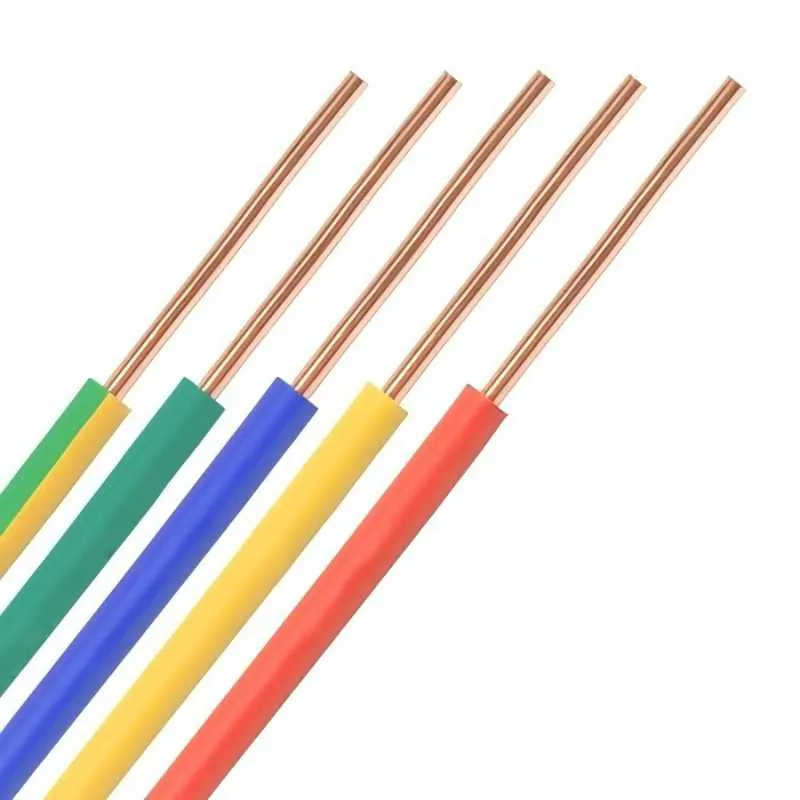Time: 2025-04-28 14:29:42 Source: Henan Province Jianyun Cable Co., Ltd.
Household electrical wiring is the backbone of modern homes, powering everything from lights and appliances to computers and entertainment systems. Understanding the types of wires commonly found in residential settings is essential for homeowners, DIY enthusiasts, and professionals alike. This article explores the most prevalent household wires, their uses, characteristics, and safety considerations, providing a comprehensive overview grounded in electrical standards and practices.

Description: Non-metallic cable, often referred to by the brand name Romex, is the most common wiring type in modern homes built after the mid-1960s. It consists of two or more insulated conductors (typically copper) and a bare ground wire, all encased in a flexible plastic sheath.Uses: NM cable is used for interior wiring in dry locations, powering outlets, switches, lighting fixtures, and appliances. Characteristics:
Description: UF cable is similar to NM cable but designed for wet or underground applications. Its conductors are embedded in solid vinyl to protect against moisture.Uses: Ideal for outdoor lighting, sheds, or other structures requiring direct burial or exposure to moisture. Characteristics:
Description: Thermoplastic High Heat-resistant Nylon-coated (THHN) or Thermoplastic Heat- and Water-resistant Nylon-coated (THWN) wires are single-conductor wires often used within conduits.Uses: Commonly used for branch circuits, appliance connections, or where conduit is required (e.g., unfinished basements or garages). Characteristics:
Description: Low-voltage wires operate at less than 50 volts and are used for systems requiring minimal power.Uses: Common applications include doorbells, thermostats, security systems, and landscape lighting. Characteristics:
Description: Category 5e (Cat5e) and Category 6 (Cat6) cables are unshielded twisted-pair (UTP) cables used for communication networks.Uses: Connect phones, computers, routers, and other devices for internet and landline services. Characteristics:
Description: Coaxial cable features a central copper conductor surrounded by a tubular insulating layer and a braided shield, all encased in a jacket.Uses: Primarily used for cable TV, satellite dishes, and sometimes internet connections, though it’s becoming less common with the rise of HDMI and fiber optics. Characteristics:
Description: Speaker wire is a transparent, insulated wire used for audio systems.Uses: Connects speakers and woofers to audio equipment or wall jacks. Characteristics:
Wires are color-coded to indicate their function, ensuring safe installation and maintenance. Common color codes include:
Identification Tip: In older homes, wire colors may not follow modern standards, or insulation may be discolored. Use a multimeter to confirm wire function: a reading of 110-120 volts indicates a hot wire, while no reading suggests a neutral wire. Always turn off power and consult an electrician for testing.
Wire size, measured by the American Wire Gauge (AWG) system, determines its current-carrying capacity. The smaller the gauge number, the larger the wire and the more current it can handle.
Safety Note: Using a wire gauge too small for the circuit’s amperage can lead to overheating, short circuits, or fires. Always match the wire gauge to the circuit breaker and load requirements.
Electrical wiring poses significant risks, including electric shock, fire, and code violations. Key safety practices include:
Household wires are diverse, each designed for specific applications, from powering outlets to connecting communication networks. NM cable dominates indoor wiring, while UF, THHN/THWN, and low-voltage cables serve specialized needs. Understanding wire types, gauges, color codes, and safety practices empowers homeowners to make informed decisions and maintain a safe electrical system. For any electrical work beyond basic tasks, consulting a certified electrician is highly recommended to ensure compliance with codes and prevent hazards.